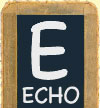Diverse Musical Traditions, Diverse Students
Carol J. Oja
Harvard University
- I want to begin by articulating one of my most heartfelt credos as
a teacher: I believe that confronting complex social and racial topics
is a fundamental responsibility for those of us who work in American
music. We have an ethical obligation to address the troubling histories
of the music we love. When we’re in the classroom, we are most
often totally on our own, yet we face many of the same challenges.
- My own teaching career has encompassed two public institutions and
one private. It began at Brooklyn College, one of the senior colleges
of the City University of New York, where most students come from working-class
families—that is, if an intact “family” exists and
at least one parent is even employed. The school provides an important
gateway for the newest waves of immigrants, and the racial and ethnic
make-up of the student body is constantly shifting. When I taught there
(which I did beginning as a graduate fellow in the early 1980s, continuing
through 1997), a high percentage of black students came from the Caribbean
(with some from African countries); there were growing numbers of Russians
and Ukrainians; and the Asian population was primarily Korean. There
were also blacks of US descent and white students from longer-established
immigrant communities, especially Irish and Italian. And there was a
substantial Jewish population, which over the decades had grown increasingly
conservative, in part through its own immigration patterns.
- In other words, Brooklyn College provided both an ideal environment
for exploring racial and social questions and an exceptionally challenging
one.
- A lightning-rod moment for me came in 1991, during a class session
about the synergy between rhythm-and-blues and early rock, when I focused
on Big
Mama Thornton and Elvis
Presley’s recordings of “Hound Dog.” This took
place in a large class of 60+ students, which was an arts component
of a required core curriculum. Yankel Rosenbaum, an Australian rabbinical
student (a Hasidic Jew) had recently been murdered in Crown Heights
(a Brooklyn neighborhood) in retaliation for the death a few hours earlier
of a seven-year-old African American child, who was hit by a Jewish
motorist. Racial tensions were painfully high, and suddenly I wasn’t
dealing with distanced, academic questions about race but was in the
middle of the action.
- As soon as I introduced the notion of a “cover” and started
parsing the racial and musical implications of Thornton and Presley’s
performances, the class discussion exploded. The level of anger—and
a sense of things being momentarily out-of-control—was pretty
frightening. The students immediately became polarized by race, and
the session required a level of facilitation far beyond anything I had
been trained to handle. Over the course of that class period—and
the remainder of the semester—the students and I worked to find
a productive language for such discussions. It was neither easy nor
consistently effective, but we were persistent.
- Since then, I have made it a focus of my teaching to develop techniques
for enabling students to discuss racial inflections in American musical
repertories. At the same time, I have moved on from the rich diversity
of Brooklyn College to work at two predominantly white institutions,
which alters the dynamics of such discussions considerably. There are
no more fireworks, yet confronting race and gender remains just as important.
Just recently, my undergraduate seminar at Harvard on musical theater
(a largely white group that also included one native Hawaiian and a
Chinese-American) discussed Paul Robeson’s performance of “Ol’
Man River,” together with Irene Dunne’s blackface rendition
of “Galavantin’ Around,” from the 1936 film Show
Boat. There were the usual moments of discomfort and silence and
surprising insight. Two-thirds of the way through class, one student
got a bit tangled in his words, threw up his hands, and said, “If
you’re going to have a discussion about race, you’re going
to end up offending someone.” That’s true. But in the process,
everyone—including the teacher—learns a bit more about people
different from themselves.
- Following are some classroom strategies I have found helpful. A recent
collection of essays about pedagogical strategies—titled Race
and Higher Education (see below) —was especially useful in
articulating these techniques. Most of these steps need to be implemented
well before any potentially fractious topics are raised. I need to say,
though, that for me this particular pedagogical mission remains very
much a work in progress.
- First, when developing a syllabus, I define all classes as “diverse”
in terms of the material covered and the issues raised. This is separate
from student demographics, and it means that choices reflected in the
content of the syllabus need to challenge the assumptions of whiteness
and maleness that underlie so much of the history that we pass on—and
on and on. It also means that it is often difficult to match course
content with existing textbooks.
- Second, I have experimented with a variety of techniques for managing
discussions about potentially divisive topics. For example, I never
begin a class on minstrelsy—which for me, as a white, is the single
greatest challenge—without laying down ground rules and declaring
straight out that the topic about to be discussed will probably make
everyone mighty uncomfortable—including me. Before leaping into
this, I try to make sure we’ve reached a point in the semester
where an environment of trust has been established in the class. I then
share my own ethnicity and family background to model how we all speak
from particularized perspectives. (After the session at the Society
for American Music, Judith Tick said to me: “Yes, it’s important
to identify your own ethnicity, but then it’s also crucial to
say, ‘No matter what my background, you really don’t know
how I think and act as an individual.’”)
- I then ask that all statements be couched in first person—never
“they do this or that”—and I ask that students try
to address one another by name. I also ask that they respect one-another’s
opinions, no matter what flies out of a classmate’s mouth, and
that there be no put-downs.
- Finally, I stress “positionality”—operating from
the premise that white students make up a race as much as black students
or Asians or any other definable racial group. I work to make them aware
of “insider” assumptions and language. (There’s often
something in the news that helps make this point, like all the recent
talk about the 2004 presidential ticket, which had two Yale alums on
it from affluent families. I heard a comedian say that since both Kerry
and Bush were members of Skull & Bones, maybe their version of “insider”
language involves using weird hand-signals during the debates!)
- When a discussion starts to become problematic—or occasionally
unpleasant—I stop it and ask the students to write down
their reactions. I’m sorry to say that I didn’t have the
sense to take that step thirteen years ago in Brooklyn, and I’ve
kicked myself ever since.
- In reading through Race and Higher Education, I was struck
by a quotation from Adrienne Rich, who articulates the fundamental reason
why discussions about difference are so important for our students.
When those who have the power to name and to socially construct reality choose not to see you or hear you, whether you are dark-skinned, old, disabled, female, or speak with a different accent or dialect than theirs, when someone with the authority of a teacher, say, describes the world and you are not in it, there is a moment of psychic disequilibrium, as if you looked into a mirror and saw nothing. (73)
To me, that puts a finger on our obligation as teachers: to shape a classroom environment where our students can remain firm in their own sense of identity at the same time as they explore their very particularized position in relation to the glorious—but racially charged—musical traditions that we place before them.
Works Cited
Books and Articles
Howell, Annie and Frank Tuitt, ed. Race and Higher Education: Rethinking
Pedagogy in Diverse College Classrooms. Cambridge, MA: Harvard Education
Review, 2003.
Morrison, Toni. Playing in the Dark: Whiteness and the Literary Imagination.
New York: Vintage, 1993.
Sound Recordings
Billboard Top Rock ’n’ Roll Hits—1956. Rhino R2 70599, 1989.
Robeson, Paul. Ol’ Man River: His 25 Greatest. ASV/Living Era 5276, 1998.
Thornton, Big Mama. Hound Dog/The Peacock Recordings. MCA MCAD 10668, 1992.
Film
Show Boat. Dir. James Whale. Universal, 1936.
| |
|
Articles |
|
Roundtable |
| Teaching Controversial Topics in American Music Guest Editor’s Introduction: Framing the Discussion Essays Deaville: Academic Freedom Garrett: Engaging Students Oja: Diverse Musical Traditions, Diverse Students Saffle: Teaching Mountain Music Wright: Controversial Aspects of African-American Music Responses • Crawford • Solie • Tick |
|
Review Essay |
| Reviews
|
| |
| Write to Echo |
| |
| Join mailing list |
| |
| How to cite Echo |
| Archives |
| |

